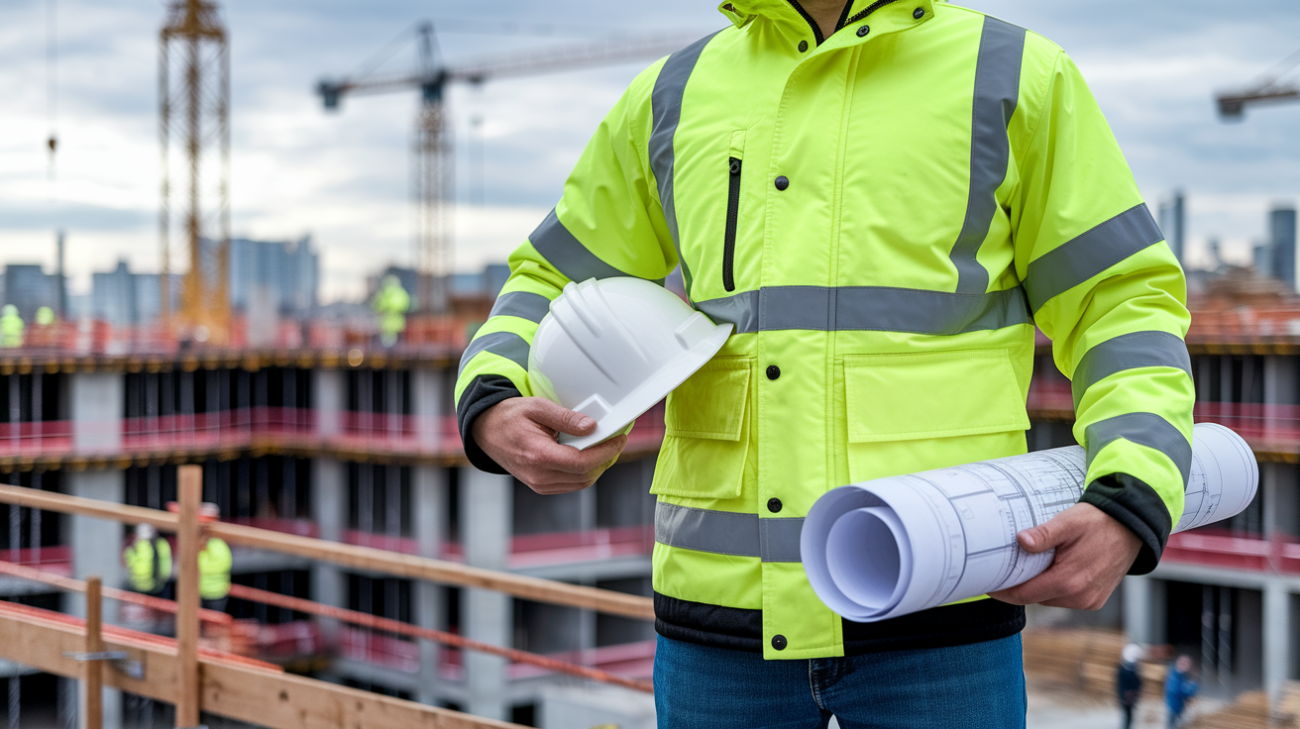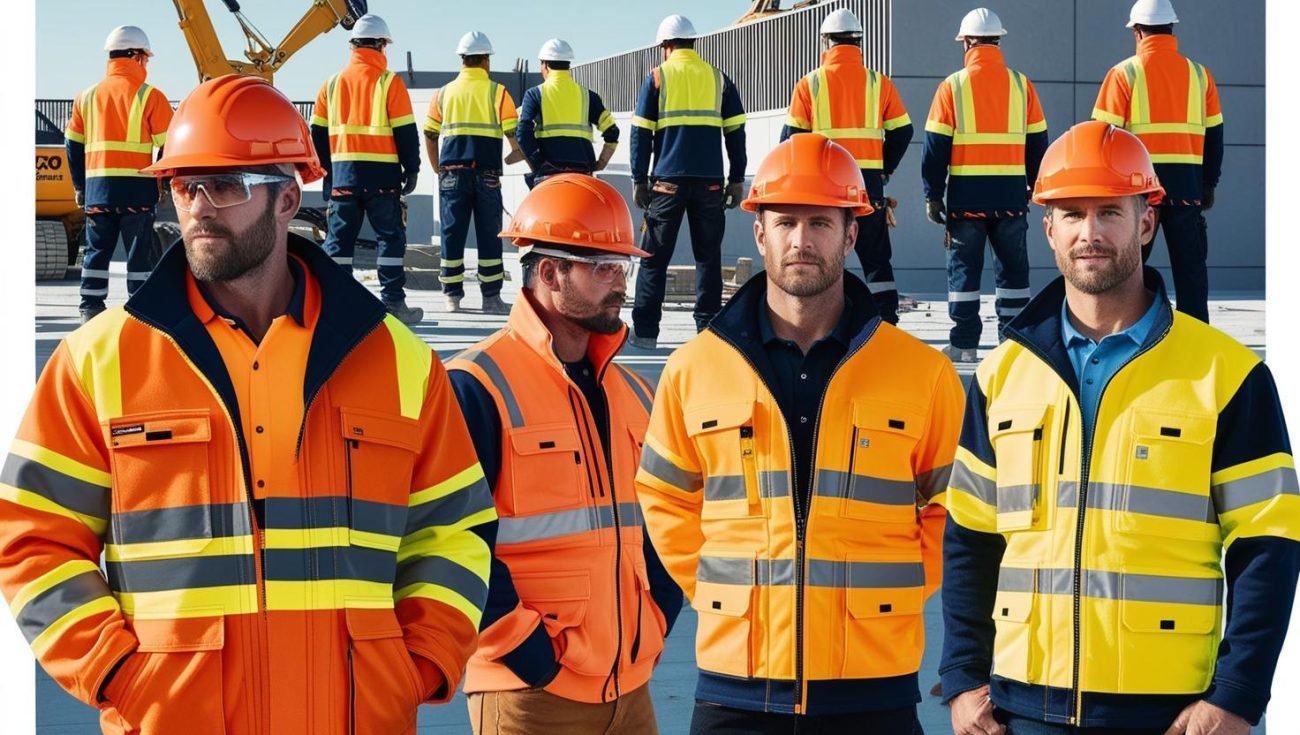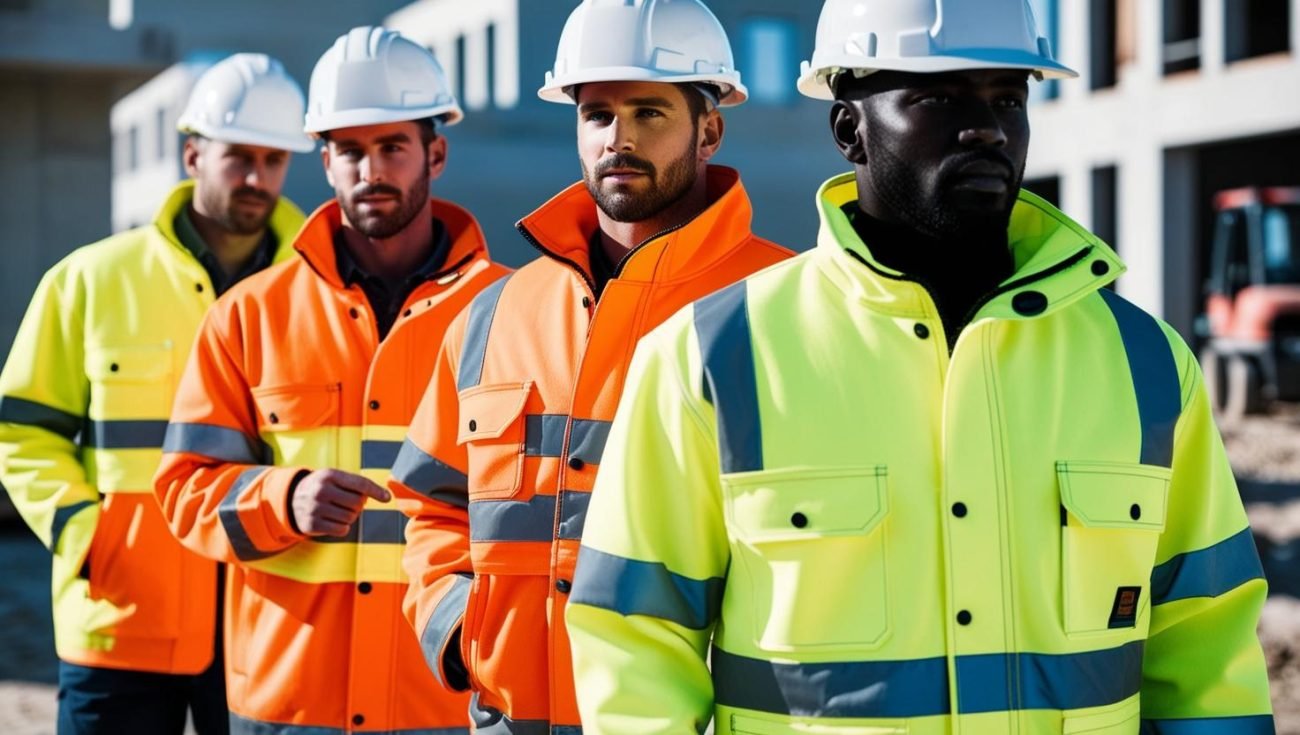The Ultimate Guide to Construction High Visibility Jackets: WorkWear Clothing Essentials for Safety Standards
 Safety in the construction industry is of utmost importance, and enforcing high visibility (hi-vis) clothing standards plays a crucial role in reducing risks. High visibility jackets, in particular, are a staple piece of workwear that not only enhances visibility on job sites but also meets strict safety requirements set by regulatory authorities like OSHA.
Safety in the construction industry is of utmost importance, and enforcing high visibility (hi-vis) clothing standards plays a crucial role in reducing risks. High visibility jackets, in particular, are a staple piece of workwear that not only enhances visibility on job sites but also meets strict safety requirements set by regulatory authorities like OSHA.
Why High Visibility Jackets Are Critical in Construction Workwear
Construction workers often find themselves in hazardous environments, such as roadways, high-traffic zones, and sites with heavy machinery. The limited visibility, especially during low-light conditions or bad weather, increases the risk of accidents. This is where high visibility jackets come into play.
These jackets are made from fluorescent materials combined with reflective tape, enabling workers to be seen from a distance by drivers and heavy equipment operators. The distinctive colors—lime yellow, neon orange, and bright red—are highly visible during the day, while the reflective accents ensure visibility at night or in dim settings.
Benefits of High Visibility Jackets in the Workplace
Accident Prevention: Hi-vis jackets protect workers by making them more visible, thereby lowering the chance of being hit by vehicles or machinery.
Improved Safety Compliance: Wearing approved hi-vis jackets helps employers and workers meet safety regulations set by governing organizations such as the Occupational Safety and Health Administration (OSHA).
Enhanced Awareness: High visibility clothing fosters mutual awareness on-site, as workers can more easily spot each other, promoting teamwork and communication.
Weather Resistance: Many hi-vis jackets are designed to protect workers from weather extremes, including rain, wind, and cold, ensuring productivity even in harsh conditions.
Key Features of High Visibility Jackets

When selecting a high visibility jacket for construction purposes, there are several features to consider to ensure maximum functionality and safety.
Visibility Levels
Hi-vis jackets are categorized into three ANSI/ISEA (American National Standards Institute/International Safety Equipment Association) classes based on their visibility levels:
- Class 1: Minimal visibility for low-risk workplaces, ideal for parking attendants or warehouse workers.
- Class 2: Intermediate visibility for higher-risk environments like road construction zones with moderate traffic.
- Class 3: Maximum visibility, suitable for high-risk areas with heavy traffic or when workers need to operate in extreme weather or nighttime conditions.
Fluorescent Colors and Reflective Stripes
The jacket’s bright fluorescent colors (lime green, orange, or yellow) create contrast against the background during daytime, while the retro-reflective tape ensures visibility in low-light or nighttime settings.
Material and Durability
High visibility jackets are typically made of robust materials like polyester or polyester blends to withstand construction site challenges. Look for options with water-resistant coatings, wind resistance, and breathability features for added durability and comfort.
Weatherproof Capabilities
Construction workers often face unpredictable weather. Opt for jackets with thermal insulation for cold conditions, rainproof materials for wet conditions, and lightweight options for summer work.
Multifunctional Design
Modern safety jackets often include additional features like pockets for tools, transparent ID card holders, adjustable fits, zippers, and ventilation options to accommodate workers’ needs.
Types of High Visibility Jackets for Construction Workers

Different types of hi-vis jackets cater to specific job environments. Here’s a breakdown of the most common styles:
Safety Vests
Lightweight and versatile, safety vests are an affordable option for jobs requiring increased visibility. They are commonly used over regular clothing in warm conditions or indoor environments.
Bomber Jackets
Offering insulation and weatherproofing, bomber hi-vis jackets are great for cold and rainy weather. They often come with removable inner liners, making them suitable for multiple seasons.
Parkas
Hi-vis parkas provide maximum protection from harsh winter elements, with features like extended lengths, insulation, and hoods to keep workers warm and visible.
Rain Jackets
Rain-specific high visibility jackets come with waterproof materials to keep workers dry and comfortable during wet conditions, while maintaining their visibility on-site.
Softshell Jackets
Designed for moderate climates, softshell jackets combine comfort, lightweight materials, and high visibility, making them perfect for all-day wear.
Custom Designed Jackets
Many manufacturers offer customized high visibility workwear, allowing companies to add logos, employee names, or specific features to standard jackets.
Safety Standards and Regulations for High Visibility Jackets
Compliance with safety standards is critical when selecting construction workwear. Here’s what you need to know:
ANSI/ISEA Standards
High visibility clothing must meet ANSI/ISEA standards in workplaces across the United States. These standards ensure that the material color, retro-reflectivity, and garment design meet minimum visibility requirements.
OSHA Regulations
- OSHA mandates the use of high visibility clothing in high-risk environments such as nighttime construction, roadwork, and zones with heavy vehicle traffic.
- Employers are obligated to provide ANSI-compliant hi-vis jackets at no cost to employees working in hazardous workplaces.
International Standards
International safety standards, such as EN ISO 20471 in Europe, also regulate high-vis clothing specifications. For global construction sites, ensure your safety jackets meet local regulatory requirements.
Choosing the Right High Visibility Jacket for Your Job Site
 Selecting the best high visibility jacket involves evaluating the job site environment and worker needs. Consider these factors:
Selecting the best high visibility jacket involves evaluating the job site environment and worker needs. Consider these factors:
Site Conditions: For night work or low-light conditions, opt for Class 3 jackets with ample reflective tape. In warm climates, choose breathable vests or lightweight safety jackets.
Weather: For extreme cold or rainy weather, insulated and water-resistant jackets are essential.
Job Role: Supervisors or workers with varied roles may prefer multifunctional jackets with additional features like radio pockets or zip-off sleeves.
Size and Fit: High visibility jackets should have a loose but not oversized fit, ensuring comfort over regular clothing while maintaining movement flexibility.
Caring for Your High Visibility Jackets
To maximize the lifespan and visibility of your hi-vis jackets, proper maintenance is crucial. Follow these tips:
Regular Washing: Clean jackets regularly using mild detergent and cold water. Avoid bleach, as it can weaken fabric and reduce reflective properties.
Inspect for Wear and Tear: Check for faded fluorescent material or damaged reflective tape, as these compromise visibility. Replace worn-out jackets immediately.
Follow Manufacturer Guidelines: Always adhere to care instructions provided on the garment label.
Store Properly: When not in use, store hi-vis jackets in a cool and dry location away from direct sunlight, which can fade colors over time.
Common Myths About High Visibility Jackets
“Hi-vis jackets are only necessary at night.”
False. High visibility jackets improve visibility in all lighting conditions, including fog, rain, snow, and sunlight.
“Any brightly colored jacket works as hi-vis clothing.”
Not true. Only jackets meeting industry standards (ANSI/ISEA or equivalent) qualify as true high visibility clothing, with specific material and reflective requirements.
“Hi-vis jackets are uncomfortable and hot.”
Today’s hi-vis jackets are made with breathable materials and come in lightweight designs for maximum comfort.
Conclusion
High visibility jackets are a pivotal element of construction workwear, ensuring the safety and visibility of workers in hazardous conditions. By adhering to safety standards and selecting the right type of jacket for your work environment, you not only protect your workers but also promote a culture of safety and compliance. Remember to maintain your jackets properly and replace them as needed to preserve their effectiveness. Safety on the job begins with investing in the right protective equipment—and high visibility jackets are the frontline defense against accidents.
FAQs About Construction High Visibility Jackets
1. What is the purpose of wearing a high visibility jacket?
A high visibility jacket is worn to improve workers’ visibility on construction sites, making them easily noticeable to operators, drivers, and colleagues. This reduces the risk of accidents, particularly in high-traffic or low-light environments.
2. Do all construction workers need to wear high visibility jackets?
Yes, OSHA mandates high visibility clothing for construction workers operating in hazardous environments, including road construction, night shifts, or zones with vehicular traffic. Employers are responsible for ensuring compliance.
3. How do I choose the right high visibility jacket size?
Select a hi-vis jacket size that layers comfortably over your normal workwear without restricting movement. Check the manufacturer’s sizing chart to ensure a proper fit, especially if the jacket will serve as outerwear.
4. How long does a high visibility jacket typically last?
The lifespan of a high visibility jacket depends on wear frequency, environmental conditions, and care. On average, properly maintained jackets last around six months to a year before they lose their brightness or reflective abilities.
5. Are custom logo high visibility jackets compliant with safety standards?
Yes, as long as the customizations don’t obstruct reflective tape or reduce the overall visibility. Always ensure your custom hi-vis jacket is compliant with ANSI/ISEA or local standards.

